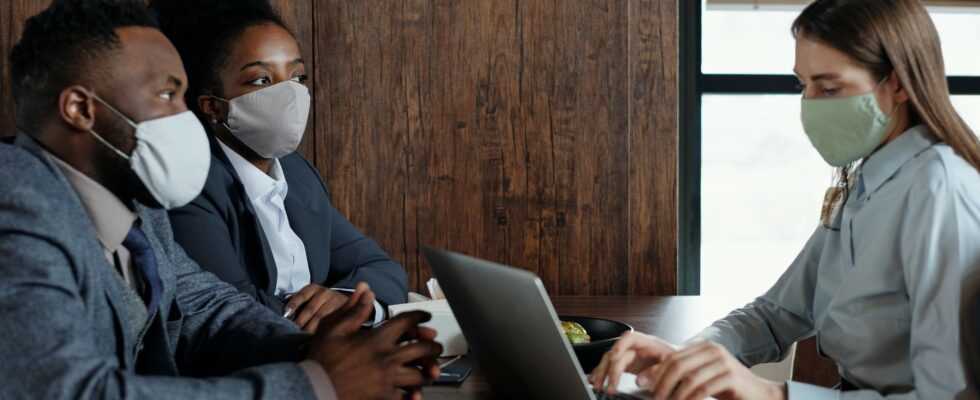The percentage of the risk of transmission drops dramatically depending on the ventilation, all the more so when wearing a mask and limiting contact.
The coronavirus pandemic gives rise, this winter 2022, to a historic fifth wave of contamination. In question, the Omicron variant, a new strain that appeared at the end of 2021, much more contagious. Although it appears to be less virulent, a variant with more extensive transmission poses a very high statistical risk for hospital blood pressure. Especially since the Delta variant has not yet disappeared (the Omicron variant represents 79% of positive cases in early January 2022).
A study published on January 6, 2022 in the journal Environmental Science & Technology examines the risks of transmission of Covid-19 disease, taking into account current knowledge about the virus, including Delta and Omicron variants. The authors conclude that “ Covid-19 outbreaks clearly show a strong trend in aerosol infections, allowing recommendations to be made to minimize the risk of transmission “.
This study contains in particular a very telling table, which we reproduce here in a translated version. It represents the risks of transmission – including at Omicron – on a statistical basis of a prevalence (number of cases in the population at a time T) of 1% of contaminations with the variant in the population. Note that the figure is probably higher in practice.
For one of the scientists behind the study, the deduction is clear : “ avoid gyms, singing, and crowded nightclubs “. But this table also and above all shows, with glaring figures, how much ventilation changes everything, even more when combined with wearing a mask and reduced contacts.
The quality of ventilation (really) changes everything
If we take the worst situation, that is to say a place requiring physical exercise (which generates a strong exhalation of infected particles), the impact of aeration is particularly significant. In a poorly ventilated indoor place, the risk is greater than 99% in the event of prolonged contact and, in this case, the mask cannot do much about it (the risk drops to 83% instead of> 99% only if the place is little frequented). It is in fact necessary to project that, in such a sporting configuration, the air becomes densely “loaded” with infected particles, which overcomes the filtration capacities of a mask over a prolonged period. Short contacts, added to masks, in this situation, therefore greatly reduce the risks (46% if high attendance, 16% if low attendance).
But the same situation of intense physical exercise, in a well ventilated place or outright outdoors, poses very reduced risks: for example, a place with low traffic (with gauge therefore), with mask and short contacts, reduces the risks. at 2.9%. The difference is glaring: remember, the same situation without all of these barrier measures brought the risk to> 99%.
A more classic situation presented in the table is that of a place where the people present are content to speak normally. For example, this can concern an open space. Good ventilation (10 minutes per hour), wearing a mask, limiting shared moments (short contacts) and establishing regular teleworking (low attendance) pose a risk of 0.21%. The same situation without these measures poses a risk of 30%.
In most of the configurations cited in the table, the quality of the aeration alone causes the percentage to drop by several tens of percent. It is therefore necessary to keep in mind, again and again, that aeration is a barrier gesture. This is added to the Emmental model: the superposition of measures offers a solid brake against the spread of the virus.

